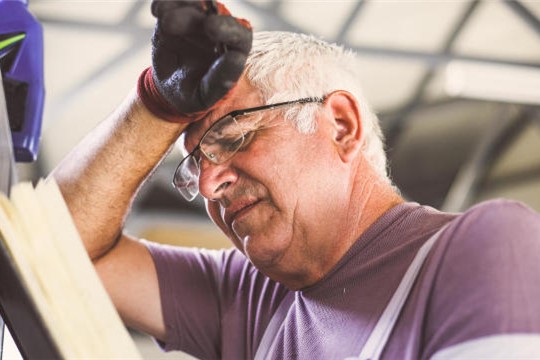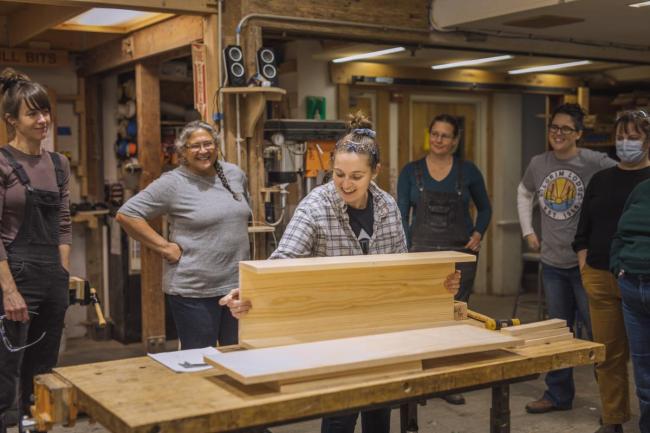The construction industry is at a critical juncture. To keep pace with the burgeoning demand for new homes, it requires approximately 725,000 new workers annually. This staggering figure equates to one new worker for every new home built. However, the looming question persists: where will these builders and workers come from, especially in a time when the housing crisis shows no signs of abating?

.
The Challenge of an Aging Workforce
One of the most significant hurdles the construction sector faces is the loss of skilled labor, particularly among workers aged 45 to 59. Many in this demographic are opting for early retirement or pivoting to different careers, leaving a noticeable void in the industry. This shift has led to a severe labor drain that not only challenges the capacity of the sector to meet new demands but also raises concerns about the loss of mentorship and craftsmanship for upcoming generations.
The Untapped Potential of the Youth

Cynthia, Huntington Homes worker
In facing this labor shortage, there’s a silver lining: the rising interest among young people to engage in hands-on work. Advocates like Mike Rowe have highlighted a budding trend where Generation Z is increasingly drawn to the trades. Dubbed the ‘Toolbelt Generation,’ these young workers are showing a keen interest in vocational training, signaling a potential revival of the industry through fresh talent and energy.

.
This trend was palpable during my recent visit to the Yestermorrow School in Vermont, where enrollment has surged. The school has expanded its capacity, renting additional space at a local airport hangar to accommodate larger, week-long projects. This is a testament to the growing appeal of hands-on education and the practical skills it fosters.
Educational Trends and Vocational Training

.
Supporting data from the National Student Clearinghouse indicates a significant uptick in vocational training enrollments. Compared to last year, there has been a 16% increase in community college registrations with a vocational focus. Specifically, enrollments for construction job training are up by 23%, and there’s a 7% rise in HVAC, vehicle maintenance, and repair programs. These statistics are promising, showing a robust pipeline of future workers who are not only prepared to join the industry but are also capable of innovating and adapting to new technologies.
Technology and Human Skill: A Symbiotic Relationship
The narrative that robotics and AI will replace human jobs wholesale is proving to be more myth than reality. While it’s true that some aspects of construction are becoming automated—like the use of robotic arms to perform repetitive tasks in modular construction—these technologies are far from replacing human workers entirely. In reality, over 95% of the construction tasks, particularly the finishing touches on a construction line, still require human intervention. This highlights an ongoing need for skilled labor that can work alongside and leverage new technologies.
Encouraging the Next Generation
As we acknowledge the enthusiasm of Gen Z for the trades, the question remains: how can the industry nurture this interest effectively? There is a clear need for targeted training programs that not only teach essential skills but also provide mentorship and a clear path to career advancement within the construction industry. Companies and educational institutions must collaborate to create opportunities that are both appealing and rewarding, ensuring that this new wave of workers is well-equipped to meet the challenges and demands of modern construction.
The construction industry is at a turning point, with the potential to resolve its labor shortage by investing in the next generation of workers. By embracing and fostering the interests of young people in vocational careers, the industry can not only fill the current gap but also ensure its sustainability and growth in the future. This is not just a solution to a labor crisis; it’s an opportunity to rejuvenate an essential sector and by extension, make significant strides toward resolving the housing crisis. Through collaborative efforts, continued innovation, and a focus on training and development, we can build a robust workforce ready to take on the construction challenges of tomorrow.
.
Gary Fleisher is a renowned blogger, consultant, and commentator on construction and housing trends, known for his insightful analysis of the industry.



